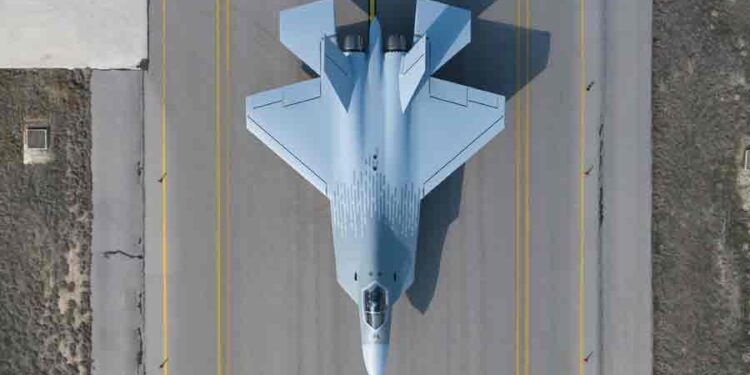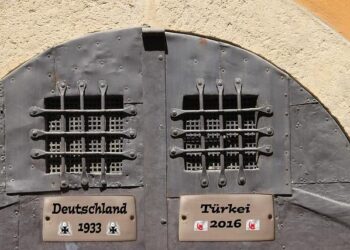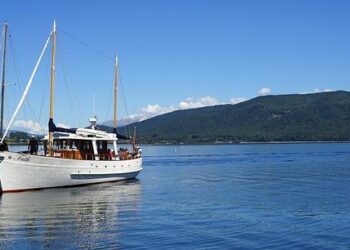TĂ¼rkiye and Indonesia have formalized a landmark defense agreement valued at $10 billion, marking a significant milestone in bilateral military cooperation. The deal, finalized for the procurement of 48 Kaan fighter jets, underscores both nations’ strategic commitment to enhancing their aerial combat capabilities and expanding defense industry collaboration. This agreement positions TĂ¼rkiye as a pivotal supplier in Southeast Asia’s defense landscape while bolstering Indonesia’s quest for modernized military assets.
TĂ¼rkiye and Indonesia Secure Strategic Defence Partnership with Kaan Fighter Jet Deal
TĂ¼rkiye and Indonesia have cemented a landmark agreement valued at $10 billion, marking a significant stride in their defence cooperation. Under this deal, Indonesia will acquire 48 units of the advanced Kaan fighter jets, a state-of-the-art platform developed indigenously by TĂ¼rkiye. This acquisition is poised to enhance Indonesia’s aerial capabilities substantially while fostering deeper industrial and technological collaboration between the two nations.
The agreement extends beyond mere procurement, including extensive technology transfer and joint production initiatives aimed at bolstering Indonesia’s defence manufacturing base. Key highlights of the deal include:
- Comprehensive training programs for Indonesian pilots and maintenance crews
- Co-development projects focusing on avionics and weapons systems
- Long-term maintenance and support contracts ensuring operational readiness
- Boost to local supply chains through collaborative manufacturing ventures
| Feature | Kaan Fighter Jet | Indonesia’s Air Force Requirement |
|---|---|---|
| Maximum Speed | Mach 1.8 | Mach 1.6+ |
| Combat Radius | 800 km | 750 km |
| Avionics Suite | Cutting-edge AESA Radar | Advanced Multi-mode Radar |
| Weapons Compatibility | Wide array of air-to-air and air-to-ground munitions | Integrated precision-guided munitions |
Implications for Regional Security and Military Modernization in Southeast Asia
The landmark agreement between TĂ¼rkiye and Indonesia to acquire 48 Kaan fighter jets marks a significant shift in Southeast Asia’s defense landscape. This deal not only enhances Indonesia’s aerial capabilities but also signals a broader trend towards military modernization driven by state-of-the-art indigenous technology. As regional powers closely monitor growing air defense competencies, neighboring countries may accelerate their own procurement programs, contributing to a competitive environment where maintaining technological parity becomes paramount. Moreover, TĂ¼rkiye’s role as a defense exporter gains heightened prominence, potentially influencing future partnerships and joint ventures in the region.
The influx of advanced Kaan jets is expected to bolster Indonesia’s deterrence capacity amid evolving geopolitical tensions in the South China Sea and surrounding maritime corridors. Analysts suggest this deal could encourage enhanced military cooperation frameworks, including joint exercises and intelligence sharing among ASEAN members, aimed at securing regional stability. However, it may also prompt strategic recalibrations by other regional stakeholders, intensifying the need for robust confidence-building measures. Key implications can be summarized as:
- Acceleration of indigenous defense industries across Southeast Asia.
- Shifts in regional power dynamics through enhanced air superiority.
- Potential for expanded defense diplomacy led by TĂ¼rkiye and Indonesia.
- Increased focus on multilateral security arrangements to prevent escalation.
| Country | Projected Jet Acquisition | Strategic Focus |
|---|---|---|
| Indonesia | 48 Kaan Fighter Jets | Maritime Security & Air Defense |
| Vietnam | 28 Su-30MK2 | Territorial Integrity |
| Philippines | 12 FA-50 | Counterinsurgency & Patrol |
| Malaysia | 18 MiG-29 | Airspace Control |
Recommendations for Strengthening Bilateral Collaboration and Technology Transfer
To maximize the strategic and economic benefits of the $10 billion deal between TĂ¼rkiye and Indonesia, cultivating a robust framework for knowledge exchange and joint development is essential. Both nations should prioritize establishing bilateral innovation hubs that facilitate continuous interaction among engineers, defense experts, and policymakers. This would accelerate the transfer of cutting-edge technology embedded in the Kaan fighter jet program, while fostering indigenous R&D capabilities. Additionally, implementing joint training programs targeting skilled workforce development will ensure operational autonomy and long-term sustainability of the collaboration.
Institutionalizing transparent mechanisms to monitor progress and intellectual property rights is equally critical. The following table outlines key focal areas that both parties can address to strengthen the partnership effectively:
| Area | Recommended Action | Expected Outcome |
|---|---|---|
| Research & Development | Co-funded defense innovation projects | Enhanced indigenous tech capabilities |
| Manufacturing Collaboration | Shared production facilities | Reduced costs and faster delivery |
| Intellectual Property | Clear frameworks and dispute resolution | Protected technology and trust building |
| Logistics & Maintenance | Joint supply chain management | Improved aircraft readiness |
- Regular bilateral defense innovation summits to review milestones and explore emerging technologies.
- Technology sharing protocols that balance national security concerns with partnership growth.
- Investment in local supply chains to empower regional economies and strengthen production resilience.
Final Thoughts
The finalization of the $10 billion deal for 48 Kaan fighter jets marks a significant milestone in the defense collaboration between TĂ¼rkiye and Indonesia. This agreement not only strengthens bilateral ties but also underscores both nations’ commitment to advancing their military capabilities through strategic partnerships. As production and deliveries progress, the deal is set to play a pivotal role in shaping the regional security landscape and demonstrating the growing influence of TĂ¼rkiye’s defense industry on the global stage. Further developments will be closely watched by international defense analysts and policymakers alike.
















